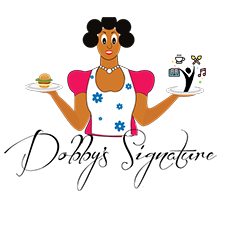
Wara is simply delectable locally made Nigerian cheese curds mostly made from fresh cow milk.
It is presumed to originate from Wara, a city located in Kwara state. In different vicinities, it goes by various names such as; Cottage cheese in America, Paneer in India, Woagachi or Wagassirou in Benin republic, Mashanza in Zaire. In the simplest form, wara is made by curdling milk (animal based milk such as cow/goat milk OR plant based milk such as soya milk). The solid part (proteins & fats) is separated from the liquid part (water and whey) after the curdling process and pressed together.
It’s a sold piece of curdled milk with a squeeky feel usually eaten alone, as a snack once fried (this is known as Beske) or as an addition to various cuisines. Once prepared it’s usually white, unsalted and uncolored . It’s often sold within a day of manufacture due to the poor shelf life of the cheese.
Types of Wara
There are two major types of wara you’d find sold here in Nigeria
1) Wara “Milk” (Main) : This is made from fresh cow milk
2) Wara “Soya”: This is made from soy milk. Another name for this is Tofu
Health Benefits Of Wara
Wara (Milk Version) is a diary product therefore it contains the same nutrients you can find in yogurt(See nono here) or milk. It’s rich in fat, protein and a little amount of carbohydrate and also contains vitamins & minerals such as; calcium, Vitamin B12, Phosphorus, Selenium, Zinc, Sodium, Riboflavin, Vitamin A, Vitamin K2. It also contains good bacteria known as “probiotics” which helps regulate the flora in the gut.
While there are several health benefits, there are also several negative health effects associated with eating too much cheese. To avoid such negative effects, moderate consumption is key.
While there are several health benefits, there are also several negative health effects associated with eating too much cheese. To avoid such negative effects, moderate consumption is key.
Wara Soya (Soya bean milk version also known as “Tofu”or “Bean Curd”) is a plant based product therefore it contains the same nutrients found in soya bean milk. It is a good source of protein, iron, calcium and the minerals manganese, selenium, magnesium, copper, zinc, vitamin B1 and phosphorous plus it also contains all eight essential amino acids. From a nutritional and health perspective, wara soya is an excellent food. It is also thought to provide the same sort of protection against cancer and heart disease as soya beans.
How to make wara – Production Of Wara Cheese (Fresh milk version)
To make wara the traditional way, you’d need ingredients such as; Freshly squeezed cow milk, Plant extract from a certain leaf known as “bomubomu” or “ewe bomu bomu”. Botanical name for this plant is Calotropis procera and the common name is Gaint milk weed. This acts as a coagulant to make the milk curdle. You’d also need a special conical shaped woven basket usually used to separate the curds (coagulated cheese) from the whey (clear liquid).
Other acidic substitutes that act as a coagulant include; white vinegar, lemon or lime juice, apple cider vinegar magnesium chloride.
Procedure:::
To make wara, 5 litres of milk would give you about 1 kilogram of cheese
Step 1: The first step is to prepare the juice extract from the leaves. To do this, you finely chop about 7 bomubomu leaves and place in a bowl. Pour about half cup of warm water over the leaves and leave to infuse for about 10 minutes.
Step 2: Pour the fresh cow milk into a pot. Turn down the heat of the burner and slow cook. This usually takes 15-30 minutes
Step 3: Sieve the liquid in step 1 above into the milk in the pot. Once you do that, you’ll notice the curds would start to separate from the whey immediately. If they don’t separate, add more juice.
Step 4: Keep stirring so it doesn’t burn. After sometime, the whey (liquid) would get clearer while the curds (solid) would get larger.
Step 5: Now it’s time to strain out the curds from the whey. You get the woven basket or a pap/cheese sieve and pour everything inside and strain. The whey protein is very important as well as nutritious for other things so don’t discard it.
Step 6: Leave the whey to drip out of the cloth or basket and squeeze the excess liquid out. The sellers usually add water to it to keep it fresh. And your wara is ready. You can fry it to make Beske or add to your salads or dishes.
……………..more on www.dobbyssignature.com







9 comments
I see this on the road mostly sold by fulani women. Cant bring myself to eat it.
I'm also weary of buying edible stuff from those women (hygiene reasons), but I lived and schooled in jos and fried Awara is VERY DELICIOUS. It is usually served with ground dried pepper + salt or fried pepper sauce. *salivating*
Well done Dobby. I'm a big fan.
Glad to have you here 🙂
Great food. Mouth mesmerizing.
Thanks for sharing this recipe. I'll try it out ASAP nd let you know the outcome. Also, you said we shld not discard the whey protein, what can it be used for.
Thanks.
Thanks for sharing this recipe, I'll try it ASAP nd let you know the outcome. Also, you said we shld not discard the whey protein, what can it be used for.
Thanks.
That would be great Anon. Whey protein is good for body building. People actually spend lots of money on the supplements.
Can one use homogenized milk? Raw milk is not sold where I live. Thanks
Yes you can